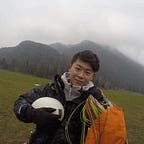Team: Binru Liu & Yitong Han
In the Develop stage, we designed two prototypes. The main function of these two prototypes is to help travelers within a group to plan their trips. The target users were young people who travel together as a group and two generations in intergenerational travel.
I have made a summary of the previous user research and case studies.
Final outcome
Considering the impact of Covid-19 and user feedback, we decided to iterate on the second prototype and develop it into our final product — a mobile APP.
The advantage of the APP is that it provides users with the latest travel information and the function to collaborate with multiple people online. Furthermore, the APP can help tourists plan their travel routes and solve unexpected situations during their travels. For example, a traveller encounters bad weather while travelling, which causes them difficulty going to their next destination. The APP will provide a solution for the traveller and reduce their negative emotions.
However, APP also has disadvantages. The most significant disadvantage is that using APPs can be a challenge for older users. Many APPs are currently not optimised for older users. Older users have difficulties in using APPs. We will design the APP with the needs of older users in mind and make it age-friendly.
Reflection
Before starting work on the final prototype, I reflected on our previous design work. I found that user habits have significant impact on the user experience. If a user uses a product that does not fit his habits, then his experience will be poor. The reason is that the user’s learning burden increased. In the design process, we should think about the usability of the product and make it easy-to-learn, efficient-to-use, easy-to-remember, few errors, and subjectively pleasing (Nielsen, 1993).
When studying user habits, we can focus on the experience of competing products. The mode of operation in competitors often represents the users’ habitual operations. In terms of operation, we should understand the user’s behavioural habits in interacting with the interface, just like gestures. I believe that products with good experience are suitable for users’ basic behavioural habits and information reading habits.
In the Deliver stage, we will focus on making our final prototype and testing it with users.
Reference
Babich, N. (2016) Touch Gestures. Available at: https://uxplanet.org/in-app-gestures-and-mobile-app-usability-d2e737bd5250 (Accessed: 24 November 2021).
Nielsen, J. (1993) Usability Engineering. 1st edn. Morgan Kaufmann.
